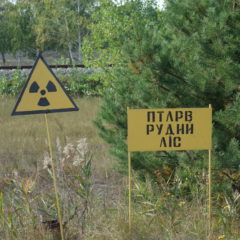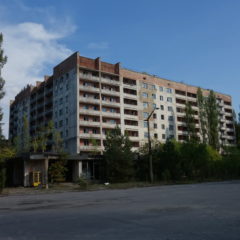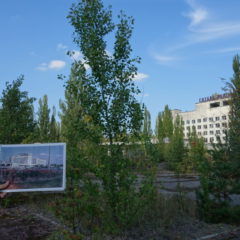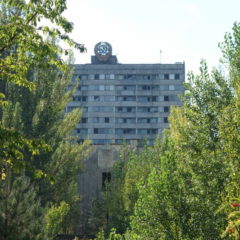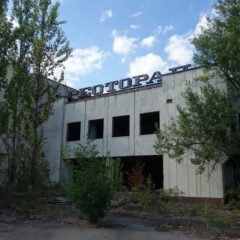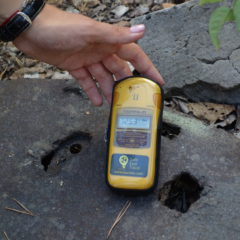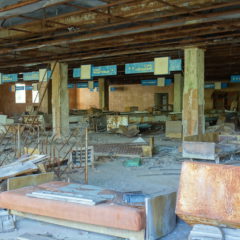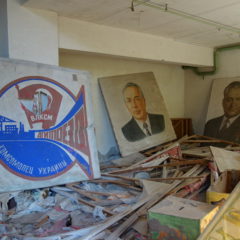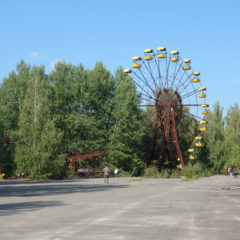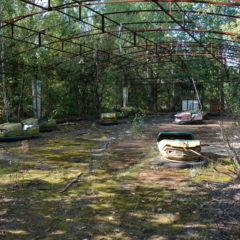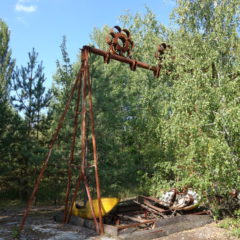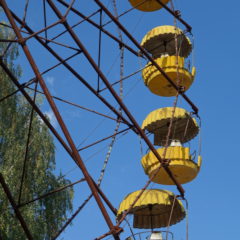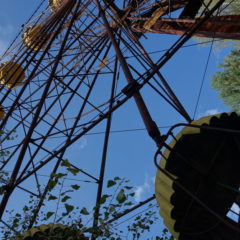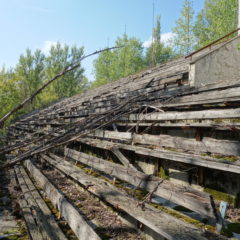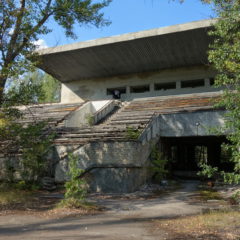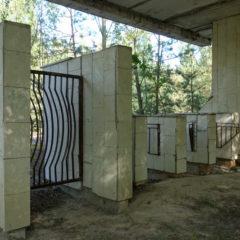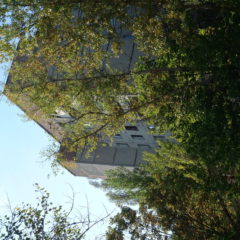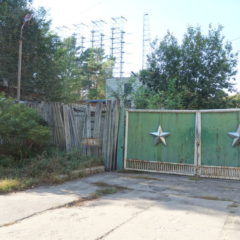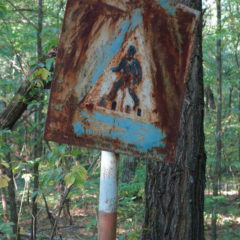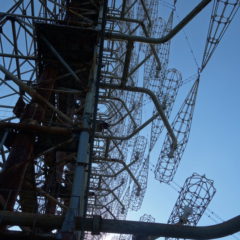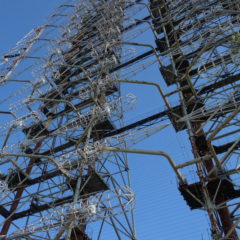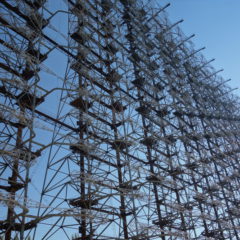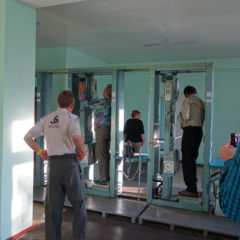From the nuclear power plant we continued to the close-by town of Pripjat.
Pripjat is probably one of the key symbols of the impact and magnitude of the whole Chernobyl disaster. The town had only been founded back in 1970, essentially when the construction of the nearby nuclear power plant started. It was laid out as the ideal Soviet city with all the relevant facilities (e.g. cultural center, swimming pool, hotel, sports center), as well as some more modern elements (like one of the first supermarkets in the whole USSR).
Things clearly changed in April 1986, when the town was heavily hit by the fallout after the explosion of the number four reactor of the nuclear power plant – the town was eventually evacuated and abandoned.
Today the radioactivity in Pripjat is low enough, to allow short-term visits. The city – after some clean-up – is fairly untouched and as such still representing the USSR of 1986 – so yet another time capsule.
We had a first stop at the welcome sign at the outskirts of town – with a radioactivity warning sign just on the other side of the street, essentially making sure, to get things back into perspective (and indeed the closer we got to the sign, the higher the measured level of radiation). We did pass another checkpoint, continued along Lenin Street and got off the van right in the city center at the central square. From here we had the hotel and cultural center straight in view – and after a bit of walking also made it to the restaurant and supermarket.
After a look around and some photos, we followed the path to the amusement park with the infamous Ferris Wheel. It was a quiet eerie feeling, to now stand here – in front of the Ferris Wheel, that in Western media had become to a sort of symbol for the whole disaster and the aftermath.
We left the amusement park and crossed, what once used to be a main street and arrived in the fully overgrown stadium. We walked across the pitch (which by now is really taken over by the forest) until we made it to the grandstand.
From here it was back to the van for another quick ride and to another surprise stop – a former military radar facility for so called duga radar or over the horizon radar, part of the USSR’s missile warning system (don’t forget – this was all during cold war time!). Check here for more information on the system.
We made it back to the van and were now heading for the checkpoint again, to leave the nuclear exclusion zone. On the way back though we had to cross through the area, that was most contaminated – the Red Forest. After the disaster radiation levels here had been so high, to even kill the plant life in the area. Most of those plants were pines – with their needles turning red – hence the area ended up being called Red Forest. In the aftermath, the liquidators had no other option than to bury the dead trees in trenches. The area remains the most contaminated area up until today. For us it was just a drive of very few minutes through the area and that in a closed vehicle – the geiger counter was screaming nevertheless.
Talking radiation … yes – we definitely did catch a higher dose than on a normal day today … at stages we had been well beyond the established safety value of 0.3 µSv/h – however the exposure times were fairly limited (e.g. the few minutes of driving through the red forest) – and many areas (with the exception of hot spots, that our guide knew to avoid) were actually within safety. Overall – once one does the math (summing up the various dosages by exposure time) – the result is, that a day trip to Chernobyl results in a lower radiation intake than a mid-haul flight at 32.000 feet.
Surely the Ukrainian military, that is safe-guarding the exclusion zone, does not just count on those mathematical exercises. At each checkpoint we had to pass through special devices, that did check for radiation sources on us (e.g. particles caught up). The machines had indicators. to show the location of the radiation source. So a positive result would have resulted in the related location being decontaminated. With rules dictating all closed clothing (no open shoes, no shorts, long sleeves etc.), the worst case here would probably have been, to leave a piece of clothing behind. But then – we were all clean and good to go … and as such made our way out of the zone without issues and back to Kiev.
